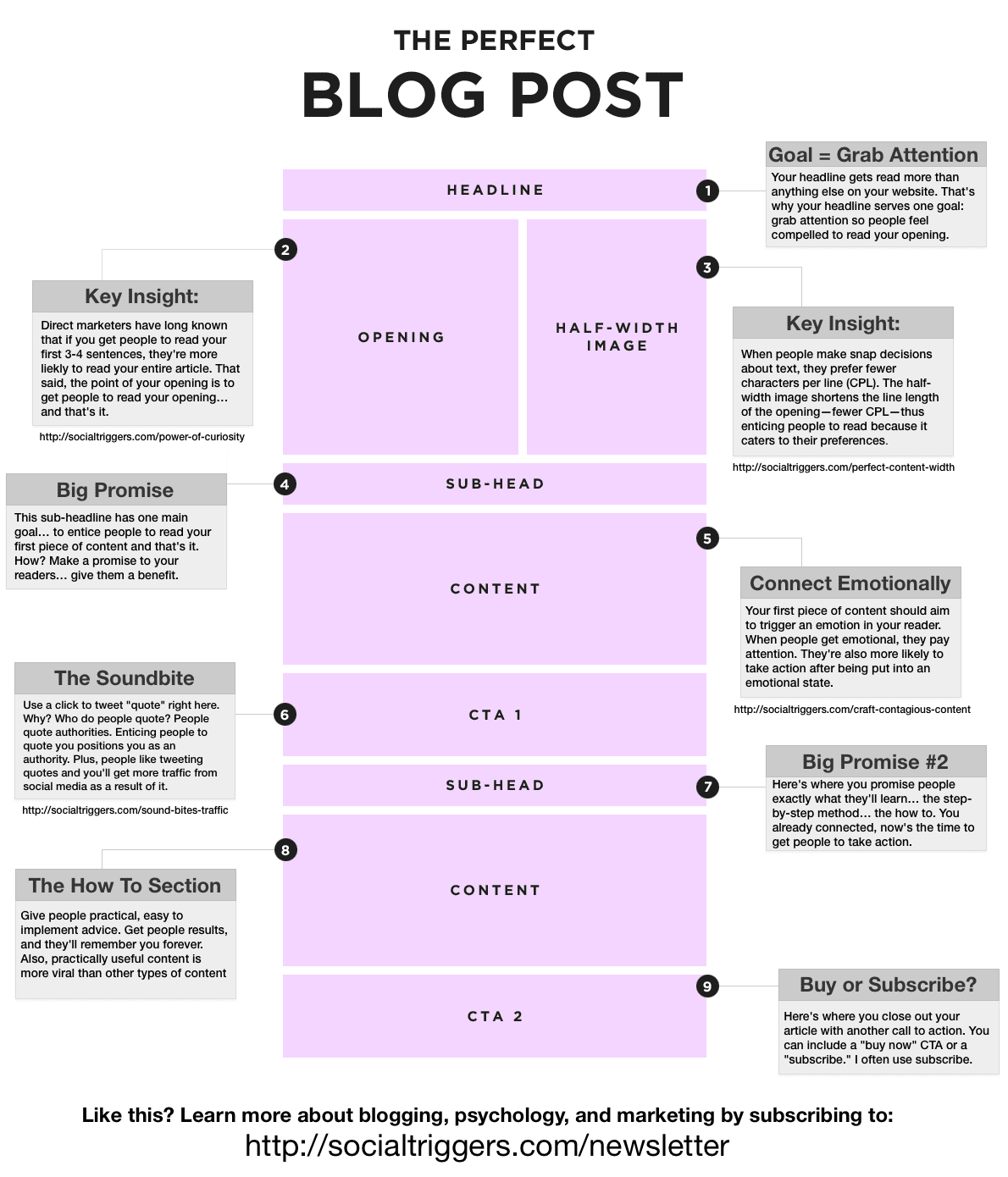Having a blog without fresh content can make it difficult for you to monetize it let alone drive quality traffic, leads, and sales.
Outside of having new content, you also have to look at other elements such as the layout, the call-to-actions, your optimization strategy, and much more.
All of these things will help capture the right audience, keep them on your site longer, turn readers into subscribers, and subscribers into paying customers.
In this blog post, I’ll explore how to turn your blog from blah to ahhh-mazing…
Perfect the Structure of Each Blog Post
Did you know that 8 out of 10 people will read headline copy, and only 2 out of 10 will actually read the rest?
For this reason, just focusing on having sensational headlines isn’t enough to make the most out of your blog posts, you have to make sure your blog posts are shaped by what your readers want.
You should be able to answer the following questions:
- What are the biggest challenges my readers are facing?
- How can I provide concrete solutions to these challenges?
- Are my blog posts easy to skim?
- Are my blog posts optimized?
- What’s the optimal word count for each blog post?
More specifically, this image depicts the elements to have within each blog post:

User-Friendly Blog Layout
Ease of navigation is important when it comes to increasing time-on-site, reducing your bounce rate, and ultimately, driving readers to take action.
Also, make it easy for readers to learn more about you and get in touch should they want to work with you. Simple things like a subscribe form/button, and contact link should be present.
One of my favorite blog layouts is HelpScout’s. The design is clean, and the categories give readers the option of navigating to the content they care about most.

Write with the Readers in Mind
Being clear about your purpose, expertise, and the content you publish does lots of good when it comes to setting expectations with your readers.
Marketing Sherpa clearly establishes their position here:

Further, I’ve highlighted reasons why mapping your editorial decisions to align with readers is beneficial in a previous post:
Editorial Decisions
These days mapping out a content marketing plan without an editorial calendar is unheard of. Your editorial decisions should be based on the following criteria:
- What time of day do your readers interact most with your content? Look at your social media channels well into email marketing and paid advertising. Take note of the times that you receive the most and the least amount of activity. Knowing this will help ensure that you’re in sync with your readers and pushing out content at the same frequency they’re online.
- What type of content do your readers engage with most? There are multiple paths to venture down with content types from videos, images, whitepapers, webinars, infographics, blog posts, eBooks and much more. Your job as a marketer is to find out which type is most valuable to your readers so that you can prioritize appropriately per your editorial calendar.
- What type of messaging resonates best with your readers? Do they prefer a casual, professional, slang or academic tones? It’s not just about only pushing out messaging that you believe will benefit your company, but putting your readers at the forefront to help amplify your reach. For instance, if your messaging resonates, the likelihood that it’ll be shared is higher.
Test Multiple Offers
Once visitors land on your blog, you have to find ways to keep them coming back for more. To do this, testing multiple offers and having high-quality content pieces to capture their attention will help.

Going Beyond Your Blog
Another way to drive traffic to your blog and make it a place where readers will want to come to consume the content you have is to venture outside of it.
Push for guest blogging opportunities with influencers and other like-minded bloggers. Doing so will enable you to cross-promote one another and expand your presence with a broader audience too.
You can also invite guest bloggers to write on your blog too. This helps take off the pressure of being the only one who generates the content. Instead, you’re making proper use of connecting with others within the community to build your tribe of quality writers.
Final Thoughts
The goal of many having a blog isn’t just to publish great content, but eventually, push that content into making money for you. For this to happen, know that consistency is key.
This means you are pushing out fresh content, keeping track of what happens on your blog (i.e. which content drives the most engagement), and finding creative ways to engage and convert your readers.





